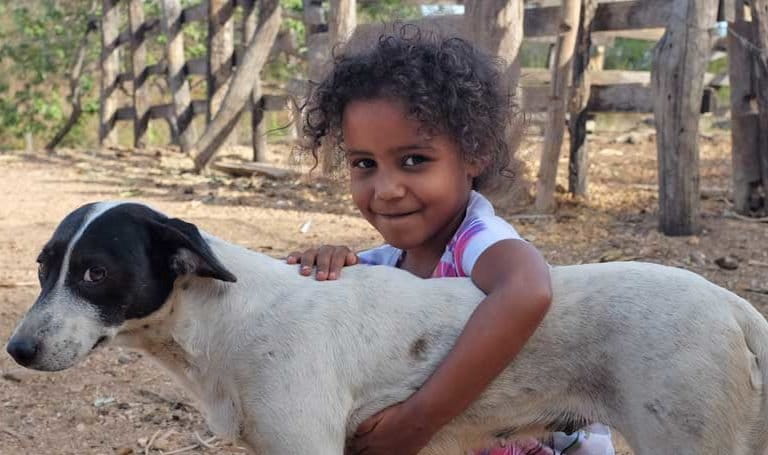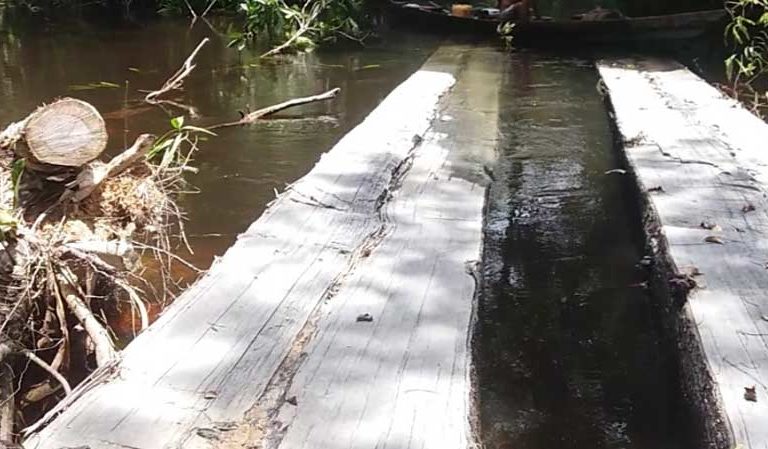Scientists studying the impact of 75 road projects in five countries in the Amazon Basin have found that they could lead to 2.4 million hectares (5.9 million acres) of deforestation. Seventeen percent of these projects were found to violate environmental legislation and the rights of indigenous peoples.
President Jair Bolsonaro has revived a plan, conceived in the 1970s, to extend the BR-163 highway, the main soy corridor in Brazil, north to the border with Suriname. The Trombetas State Forest, one of the four conservation units the road would cut through, stores 2.3 billion tons of carbon dioxide — more than Brazil’s entire emissions in 2018.
A sweeping policy change by the Bolsonaro government opens unregistered ancestral indigenous lands to landgrabbers, loggers, ranchers, and soy growers, with huge risk for the Amazon.
DELI SERDANG, Indonesia — A forest in Indonesia’s Sumatra Island is being cleared to build access roads for a state-funded dam project that has been bogged down by disputes over…
The Brazilian savanna has always been a dry place, but the massive conversion of native vegetation to soy is making it far dryer, as is deepening, climate change-driven, drought.
An area half the size of Switzerland in Brazil’s Cerrado biome could see its biodiversity plummet as sugarcane farms expand to meet global demand for bioethanol, a new study says. Researchers calculated that some parts of the Cerrado could see up to 100% loss of mammalian species richness; endangered animals like the maned wolf and the giant anteater will be the most affected.
The land rights of quilombos — communities of runaway slave descendants —are assured by Brazil’s Constitution; but those rights are now largely disregarded by agribusiness and Bolsonaro.
One of the Amazon’s most deforested regions, Lábrea, in Brazil, is remote, poorly policed and suffering from a land tenure crisis. As a result, land grabbing, illegal logging and murder are routine.
Some 400 indigenous people displaced from an informal settlement in Manaus have struggled to make a living amid scarce jobs and limited income sources during the COVID-19 crisis. The capital of Amazonas state, Manaus accounts for Brazil’s fourth-highest number of deaths due to COVID-19; authorities warn that the state’s health system is close to its limit.
Brazil’s environmental agency IBAMA has stepped up efforts to fight environmental crimes during the COVID-19 crisis. But the fate of these operations is now uncertain, following the firing of IBAMA’s enforcement director.
JAKARTA — The Indonesian government’s plan to relocate the country’s capital from Java to Borneo has hit a wall amid the COVID-19 pandemic, with a top official saying they would…
Environmental degradation has already triggered disease outbreaks in Brazil. The risk of a new emergent zoonotic disease arising there, like COVID-19, is intensified by Bolsonaro’s forest policies.
Invasions of indigenous reserves continue to escalate in the Brazilian Amazon amid the rapid spread of COVID-19 throughout the country, exposing how indigenous people are vulnerable to increased violence and infection amid a reduction in environmental oversight.
Ranching is booming in Paraguay’s Gran Chaco, destroying the biome, but the nation’s goal of breaking into sustainable beef and leather markets may offer a motive to curb deforestation.
On 9 March 2020, Mongabay published a commentary written by Philip M. Fearnside on the “Solimões Sedimentary Area”, an oil and gas project that would implant thousands of wells spread over the western portion of the Brazilian Amazon. EPE, the Brazilian Energy Research Office, sent a response to Mongabay claiming “conceptual mistakes.” Fearnside, now, comments on these claims.
ACEH BESAR, Indonesia — Conservationists say a road project at the northern tip of Indonesia’s Sumatra Island poses a threat to critically endangered wildlife, but the government says it’s a…
AMBON, Indonesia — Indonesia’s Ministry of Environment and Forestry has charged a director of a plantation firm on the eastern Indonesian island of Seram with illegal logging in a dispute…
GENERAL NAKAR, Philippines — Lucio Tena, 64, has been growing coconuts on his 20-hectare (49-acre) farm in General Nakar, on the east coast of the Philippine island of Luzon, for…
Conserved areas, indigenous and traditional communities are being put at risk by illegal roads rapidly being built in the Amazon’s Purus / Madeira basin, while authorities do nothing.
JAKARTA — Conservationists and affected communities have slammed a plan to build a road through a jungle-clad mountain in Indonesia’s West Java province, citing the lack of permits and the…
Dung beetle species populations are moving toward collapse in parts of the Brazilian Amazon apparently due to climate change-driven drought, fires, and other human disturbances.
AMBON, Indonesia — Activists in Indonesia have called on police to drop criminal charges against two indigenous men who took part in a confrontation against a company accused of illegally…
In 2019, suspect exports of rare wood to Europe, the US and beyond were legalized, likely prompting soaring damage to the Amazon rainforest and new attacks on indigenous people by illegal loggers.
New research finds that if humans carry on with business as usual and the environmental degradation that results, we will pay a steep price — quite literally. Researchers with WWF,…
The biodiverse rainforest of the Amazon’s Purus and Madeira river basins is at risk; new roads could be built to eventually serve extensive oil and gas wells.
MEDAN, Indonesia — Activists have deplored the recent jailing of two indigenous community members in Sumatra in a land conflict involving an affiliate of pulp and paper giant Royal Golden…
New research looking at whether particular types of wildlife are more affected than others by habitat loss determined that predators are the most impacted, as was expected — but the…
Attacks on indigenous Kaiowá communities in the Brazilian state of Mato Grosso do Sul at the start of the year have highlighted a long-running campaign of persecution and growing violence against the group.
JAKARTA — Indonesian small-scale fishers and coastal communities may stand to lose from a sweeping package of deregulation proposed by the government to attract big investment, marine activists have warned.…
A new study assessing the cumulative impacts of human activities on wildlife found that the vast majority of terrestrial species are facing “intense” pressure due to humanity’s footprint across the…


































































